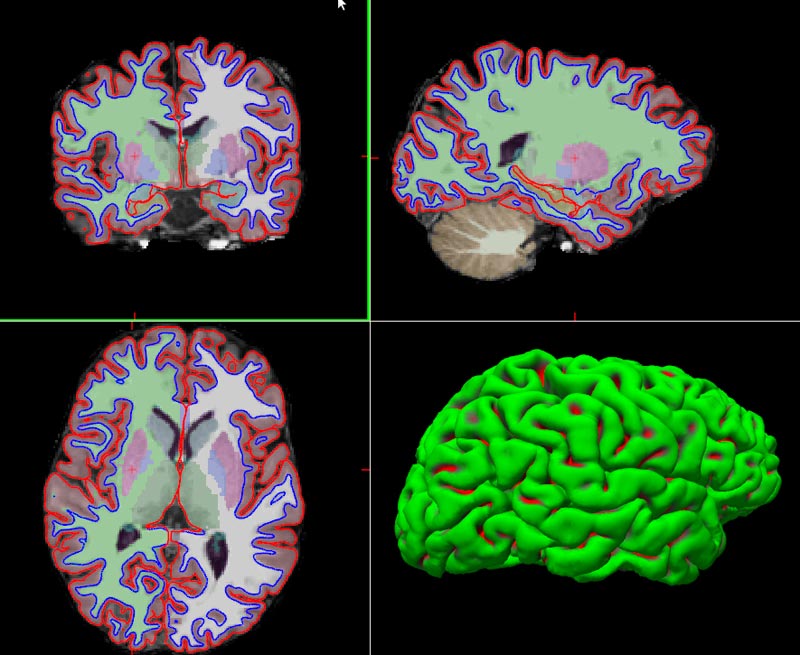An investigation published by the journal Nature, and in which the Psychiatry Group at the University of Cantabria has participated, describes how common variations in the genome have an important effect on the structure of the human brain.
The enormous complexity of the structure and organization of the human brain is determined by genetic influences and environmental factors (physical exercise, food, age, use of drugs...). The object of the study has been to discover if there are common variations (SNPs) in the human genome that change the volume of parts of the brain that are important for memory, motivation, behaviour and which are related to mental illness
The Research Group in Psychiatry from the University of Cantabria – Valdecilla Institute of Research (IDIVAL) –Centre of Biomedical Research in the Mental Health Network - CIBERSAM) collaboration, from the Carlos III Health Institute , part of the ENIGMA Consortium which developed the study and has participated throughout the study of the sample of PAFIP psychosis PAFIP. With Roberto Roiz Santiañez, A scientist of CIBERSAM in Marqués de Valdecilla University Hospital, as the principal researcher in Cantabria, the psychiatry group led by UC Professor Benedict Crespo Facorro is the only research group in Spain involved in this work. Over the past decade, this group has led the research in neuroimaging and genetics in the study of biological basis of schizophrenia.
The research published in Nature has discovered the existence of five genetic variants that significantly influence the volume of subcortical brain structures (putamen and caudate nucleus). In addition, it has replied to the findings of another three genetic variants associated with the intracranial volume and the volume of the hippocampus. It is noteworthy that these genetic variants show a concrete effect on the volume of specific brain structures and are in areas close to genes which condition brain development during pregnancy and the first months of life.

Fig. Segmentation of subcortical structures
These results show that the use of collaborative analysis of data from imaging and genetics facilitates the discovery of common variants of the genome that affect the development of the human brain. Besides, alterations found in brain regions can give rise to various neuropsychiatric diseases. Therefore, identification of these genetic variants can help to understand the mechanisms that participate in these diseases.
International study
The cases of more than 30,000 people were studied, combining data about brain magnetic resonance imaging and genetic analyses (GWAS). The research published has been made possible thanks to ENIGMA, the creation of an international consortium of research (http://enigma.ini.usc.edu/), which pursues the development of collaborative studies of brain imaging and genetic using meta-analysis.
This type of research excellence is only possible because of international consortiums, studying thousands of patients, which can then demonstrate the effects of genes on the brain structure and which could not be evidenced in studies carried out by isolated groups.
Article in Nature: "Common genetic variants influence human subcortical bran structures". DOI:10.1038/nature14101
